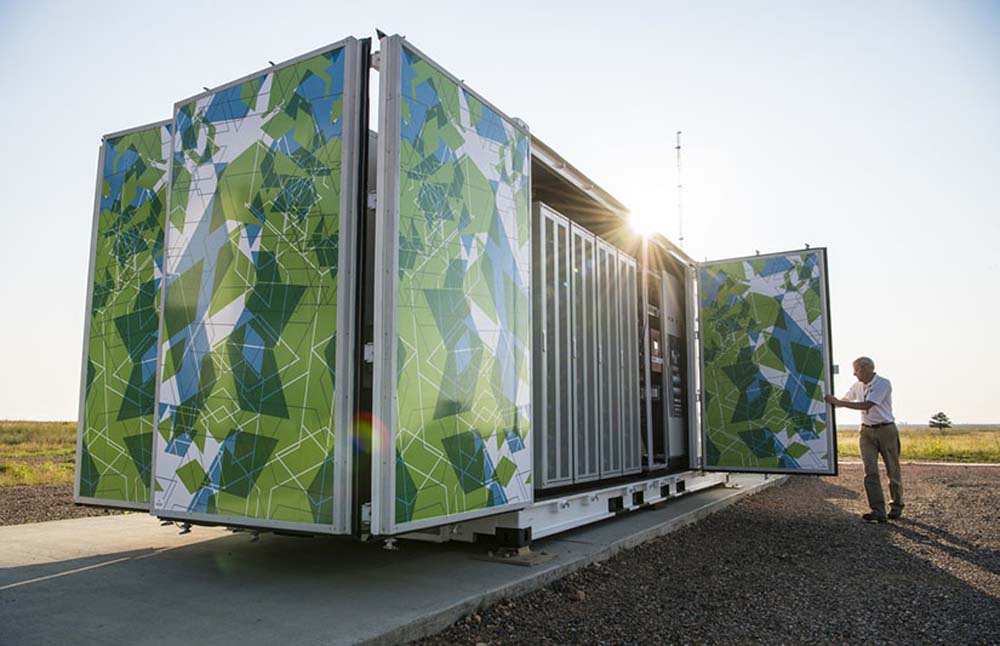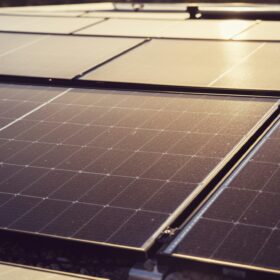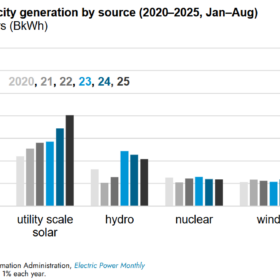Behind-the-meter storage (BTMS) systems directly supply homes and buildings with electricity and offer many advantages such as the ability to minimize grid impacts, integrate EV charging, and more.
The BTMS markets are expected to see strong growth, as noted in Wood Mackenzie’s Global Energy Storage Outlook, which forecasts 57GWh of new deployments through to 2030. The report points out that the residential sector is being driven by cost reductions and consumer awareness, coupled with solar hybridization and electric vehicle adoption.
Researchers in the BTMS Consortium at the National Renewable Energy Lab (NREL) are working with other national laboratories to develop energy storage technologies for stationary applications below 10MWh. Their recent work, which aims to improve lithium-ion (Li-ion) battery designs is published in the Journal of the Electrochemical Society, delved further into promising opportunities, as well as limitations, of using LTO/LMO battery cells for stationary storage use.
“We already know a lot about Lithium-ion batteries, but batteries for different applications have different requirements,” said NREL Researcher and Project Leader Yeyoung Ha. “Our research looks at how to leverage the developments from electric vehicle battery research for new applications in stationary storage.”
According to the researchers, BTMS systems have different charging and discharging patterns than a typical electric vehicle and require Li-ion battery materials that meet these unique priorities. BTMS systems, for example, are expected to operate safely and efficiently over a long lifespan. The researchers looked at Li-ion battery designs using a Li4Ti5O12 (LTO) anode and LiMn2O4 (LMO) cathode, which are promising critical-material-free candidates that offer the safety and long lifespan required, however, their low energy density is a drawback.
NREL researchers evaluated the temperature-dependent performance of LTO/LMO cells with various electrode loadings, and they determined that using thicker electrodes in battery designs can increase the cell capacity and energy density, while decreasing overall cell costs. However, these thicker electrodes require ions to travel a longer path, limiting the use of electrodes. They found that temperature adjustments can alleviate these negative impacts but may introduce added complications.
“Our goal with this research is to identify a ‘sweet spot’ to leverage the advantages of electrode loading and increased temperatures to maximize the performance of LTO/LMO battery cells,” Ha said. “Our research refined material designs for BTMS specifically, converting this well-known power chemistry to energy cells.”
By applying electrochemical modeling to simulate reactions at different temperatures and electrode thickness, they verified their experimental results. Instead fully discharging the batteries, as for electric vehicles, they found that allowing batteries to have intermittent rest during discharge, the electrode use was significantly improved. And they determined that this type of pulsed discharge is well suited for BTMS stationary applications, where the batteries will be used only when there is intermittent demand and then transitioned back to a resting stage.
Although these optimized LTO/LMO battery cells offer many advantages, the research team is also exploring cathode options that may better meet the needs of the stationary energy storage systems that are critical to ensuring that the power from renewable energy sources is available when and where it is needed.
This content is protected by copyright and may not be reused. If you want to cooperate with us and would like to reuse some of our content, please contact: editors@pv-magazine.com.









I’d really like to read some expert independent opinions & evaluations about some of the BTMS battery alternatives to Lithium…… like the aqueous-zinc Eos Znyth batteries developed by Eos Energy Enterprises, currently being manufactured in Pennsylvania. Eos claims their batteries are less expensive, safer (less prone to fires), can be located inside buildings, don’t require mechanical ventilation systems, are 100% recyclable, and are ideally suited to stationary BTMS storage applications. Anybody know more about these batteries or other promising alternatives to Lithium.
In 2007, before Lathum ion Batteries became the overpriced rage, I built a Deep Cycle lead Acid Battery storage system that today is 8,000-amp hours of 12-volt batteries and at 60% fill are equivalent to 57 Kilo Watt Hours of DC storage or about the same as 4 Telsa power Walls. The Batteries, wiring and rack system cost $9,200.00 and the replacement batteries that need to be replaced every 6 years costs $7,600.00. Over 24 years of replacements the system will end up costing $32,000.00 to operate or pro-rated at $1,334.00 a year. 4 Tesla power Walls with one replacement at 12 years is $32,000.00 original installation and $26,000.00 for the replacement or $58,000.00 for the 24 years pro-rated at $2,417.00 per year. This costs more than the 8,000-watt Tesla Solar Roof I purchased for $39,000.00 for my home without batteries.
With NEM-2.0, the payback from The Tesla Solar Roof is immediate with 8,000 Kilowatt hours of generated and banked power with no replacement batteries or battery costs required. The Grid becomes my battery and gives me cash credits every month that I can use up in the wintertime. At 26 cents per Kilo Watt Hour, that is $2,080.00 in savings every year. It will take 15 years to completely cover the cost of the roof plus solar after the Federal Tax Credit. With the additional cost of the batteries, the payback would be $2,454.00 per year for the time of day compensated battery profits giving an additional $374.00 a year for battery ownership. You can see where I am going with this. Even with cheap lead Acid Batteries, there is not enough compensation to even pay for the batteries. If the utilities start charging a monthly fee for the solar installations plus giving less credit for the extra kilo wat hours delivered to the grid that the homeowners do not use themselves, like in the California PUC proposed solar fees and rates in NEM-3.0, Batteries will only make sense if the homeowner went completely off the grid with their system of behind the meter battery storage to ditch the Electrical tariffs and fees from the utilities that would add up to $72,000.00 over 24 years rather than just the electric bill of $49.000.00 over the same period for 8000 kilo watt hours per year usage.
Added note, with no “tier rates”,” no “time of day overpriced bills”, just power. my off-grid system, with batteries, will cost $56,000.00 over the same 24 years and with no grid connection or $2,333.00 per year or about $200.00 per month for electricity or 29 cents per kilo Watt hour to be off-grid.
As mentioned before, the most versatile way to go (home or small business storage) is to have 2 or more EV’s with a V2G/V2H (AC) option. The second EV could be a used one –to save $$$. The plus side to using EV’s for storage is that they are portable–one could ‘move’ the power to a 2nd location if needed, or for power outages they could be rotated to an alternate charging location.
Great idea. Going to an active charge station and filling up the batteries to power your home. If you have 2 EVs, you can swap them on alternate days and keep the house powered all day every day. When you figure each EV is equivalent to four Tesla pawer Walls that costs $32,000.00 to install, that is almost the cost of one of your EVs. Of course, is the power outage in area wide and not just local, you may have a problem finding an active charge station and there could be 1973 style line up of EVs trying to get a charge at an active one. That is when an off-grid power system with a pure sine wave inverter, not connected to the grid, or a backup generator with 10 extra gas cans full of gasoline would come in handy.